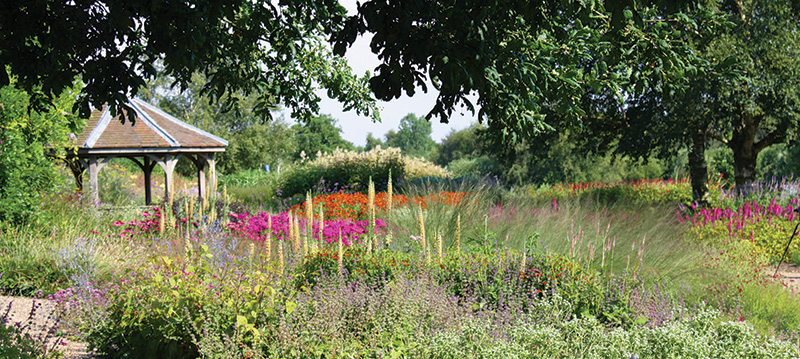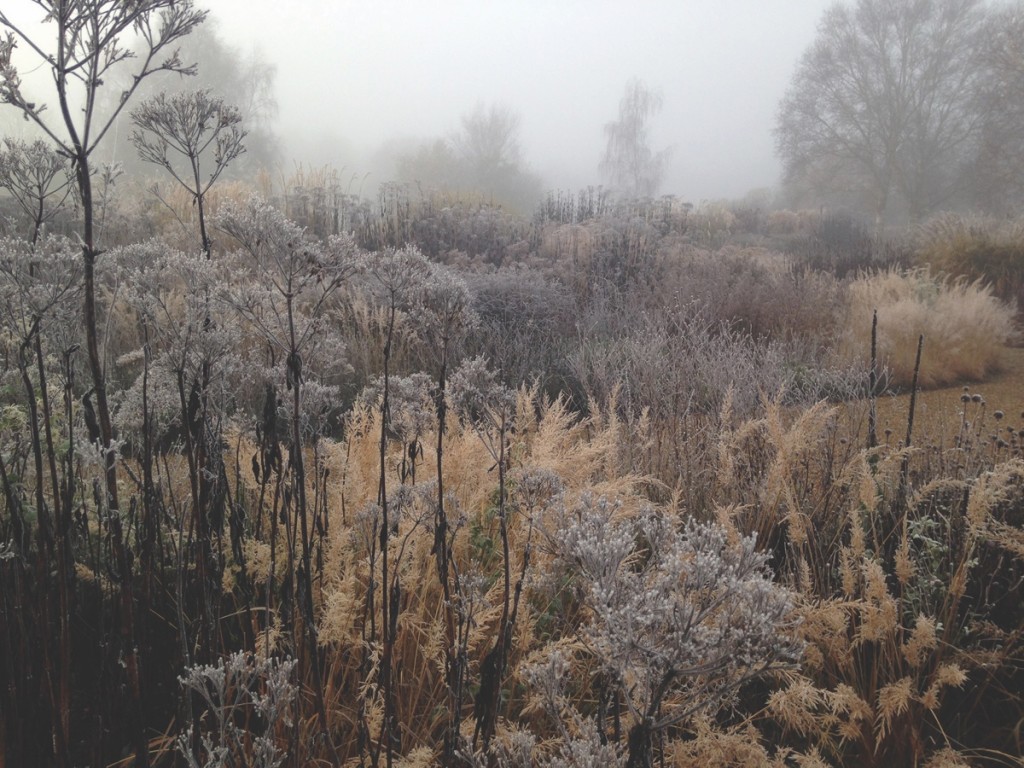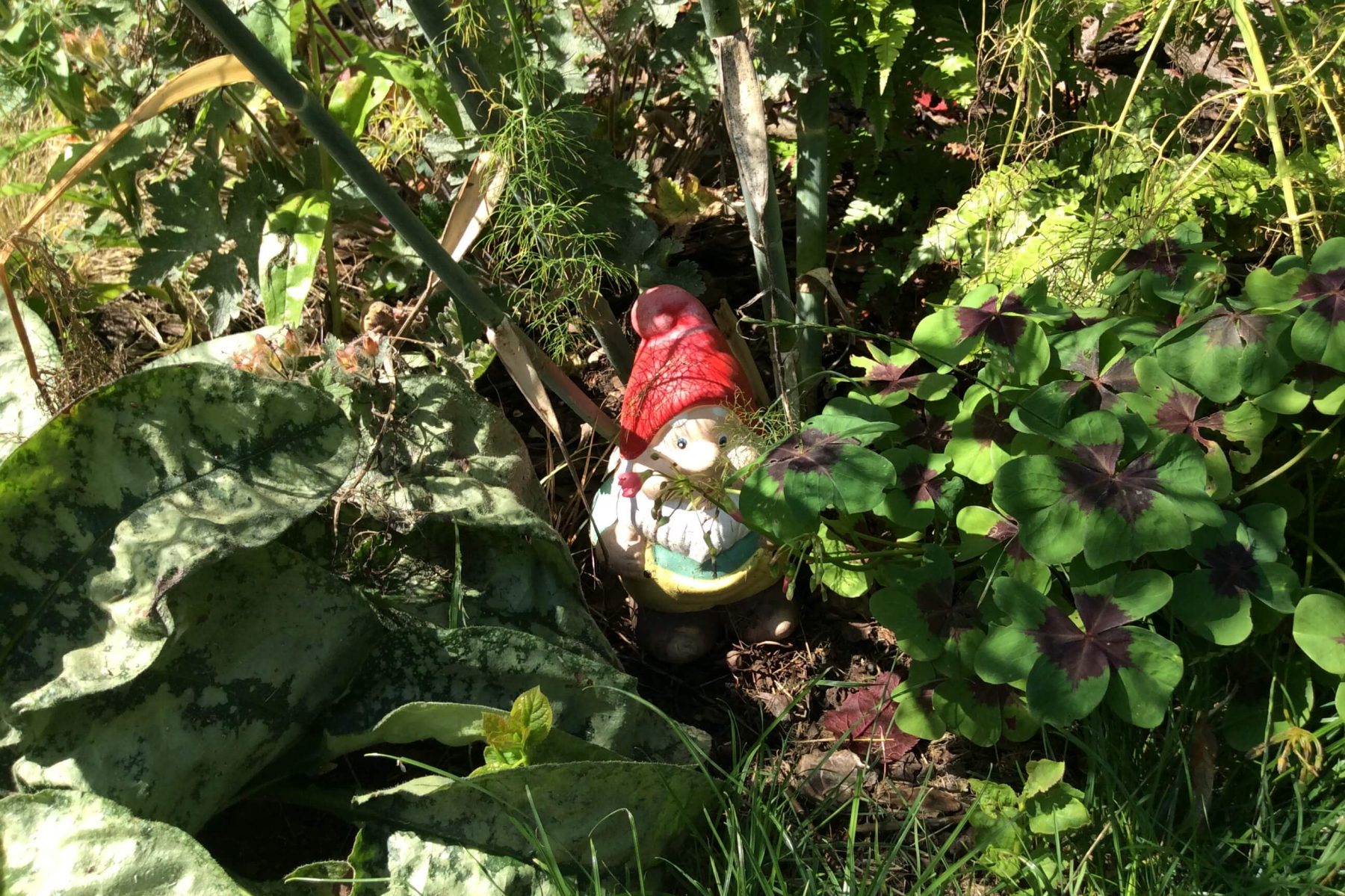
In the midst of this month’s frosty weather, I am fondly remembering last summer. We spent a week glamping on the Norfolk coast, during a rare and glorious heatwave. We spent every day at the beach. The kids screamed as they jumped in and out of the surf, collected shells in buckets, explored rock pools, and made sandcastles. We ate fish and chips, and ice creams that melted faster than we could lick them. We went crabbing (unsuccessfully). We made smores around the camp fire at dusk, and basically had a fabulous time.
On our last day, we decided to visit Pensthorpe Natural Park. As I stepped into the Piet Oudolf-designed Millennium Garden, I was entranced. The heat was sultry and hazy, there was pollen and scent in the air, and bees were buzzing all around us. The flowing movement, colours and textures of the plants utterly filled up my senses. I defy anyone not to reach out both their hands and stroke the plants as they pass through. The plants cascade across an open acre of the park in bold drifts. Grasses and delicate flowerheads sway and rustle in the breeze, and draw you further and further on into the garden. This is the only place where I have ever seen a hummingbird hawk moth. It’s very special, and I urge you to visit there this summer.
The garden’s designer, Piet Oudolf, is world famous for creating beautiful, naturalistic gardens, where form, texture, light and movement are just as important as colour. And he uses plants, rather than hard landscaping, to create the structure and shape of his gardens. Swathes of grasses and perennials, planted en masse, give the border at Pensthorpe a painterly effect. These plants take on new life in late autumn and winter. Long after they have passed their flowering peak in late summer, the tall, blackened seedheads, dried stems and curled leaves, take on sepia tones and a remarkable, architectural beauty as they decay and die.
“A plant is only worth growing if it looks good when it is dead.”
– Piet Oudolf
Many of the plants he uses originally come from the North American prairies, and give their name to this style of planting. Happily for me, prairie-style planting is well-suited to my free-draining, sandy soil, and I am feeling quite inspired to renovate the south-facing border of my garden in a Piet Oudolf style. The border will be approximately 1.5 metres deep and 5 metres long, with a fence behind and lawn in front, much smaller than the scale of the garden at Pensthorpe. I certainly won’t be able to plant in groups of 11 or 15, like at Pensthorpe, but I hope to achieve a border that evokes Oudolf’s style through my choice of plants.
“The idea is not to copy nature, but give a feeling of nature.”
– Piet Oudolf
I rarely spend significant amounts of money on my garden, so it has been quite a treat ordering so many new plants! My budget for this border is £80. These are the plants I have bought so far:
- Briza media (common quaking grass)
- Helenium ‘Rauchtopas’ and ‘Chelsey’ (sneezeweeds)
- Rudbeckia fulgida var. sullivantii ‘Goldsturm’ (black-eyed susan)
- Monarda ‘Squaw’ (bergamot)
- Kniphofia ‘Tawny King’ (red hot poker)
- Echinacea purpurea ‘Magnus’ and ‘Butterfly Kisses’ (coneflowers)
- Calamagrostis x acutiflora ‘Karl Foerster’ (feather reed grass)
- Phlomis tuberosa ‘Amazone’ (Jerusalem sage)
- Pennisetum villosum (feathertop grass)
I’ve already started preparing the border for the new planting scheme. Existing plants that fit the prairie-style will stay put: hemerocalis (or daylilies), dierama, gaura, miscanthus (zebra grass), salvias (various), agastache, rudbeckia. I’ve already moved some plants that wouldn’t work: geraniums, heucheras, foxgloves, pulmonarias. And as usual, I’ll also be scavenging plants from elsewhere in the garden to save money: achilleas, stipa tennuissima. Finally, in autumn this year, I’ll plant large groups of bulbs to provide colour in spring and early summer, as most of the plants above flower in late summer: allium hollandicum ‘Purple Sensation’, allium cristophii, drumstick alliums (sphaerocephalon), and maybe delicate white narcissus.
In the spirit of Oudolf’s designs, I will resist cutting everything back in late autumn, so we can appreciate the plants’ skeletons through our living room window all winter. Instead, I’ll cut back the dead growth in spring, when it’s time to make way for new shoots.
“The skeletons of the plants are for me as important as the flowers.”
– Piet Oudolf
I’m excited to finish preparing the border and start planting, but the snow and hail we’ve experienced this week have held up my progress! I’d best wait until temperatures are a little more reliably above freezing. I’ll post some photos of my progress soon. In the meantime, the lovely people at Pensthorpe have allowed me to share some photos of their wonderful Millennium Garden. I hope I’ve inspired you to try something new too. x

